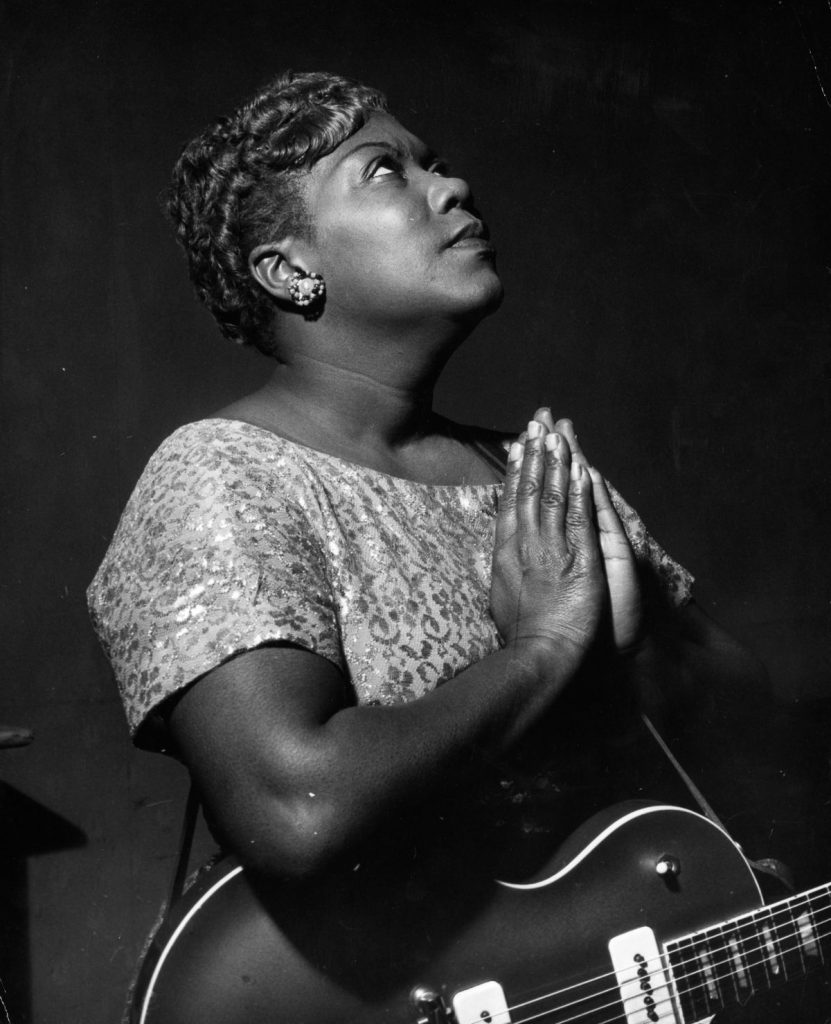Early Life and Musical Beginnings Sister Rosetta Tharpe was born on March 20, 1915, in Cotton Plant, Arkansas, as Rosetta Nubin. She was introduced to music at an early age through her mother, Katie Bell Nubin, who was a singer, mandolin player, and evangelist in the Church of God in Christ (COGIC). The church placed great emphasis on music, particularly gospel, and Rosetta quickly developed her skills on the guitar and vocals. By the age of six, she was already performing in church settings and traveling with her mother in evangelical performances across the South.
Rise to Fame In the 1930s, Rosetta moved to Chicago and later to New York City, where she gained recognition for her unique fusion of gospel and secular music. Her groundbreaking ability to blend spiritual themes with the energy of rhythm and blues set her apart from other gospel artists of the time. In 1938, she recorded several songs for Decca Records, including “Rock Me” and “That’s All,” which showcased her distinctive electric guitar style and powerful vocals. These recordings made her one of the first commercially successful gospel artists and earned her widespread acclaim.
Influence on Rock and Roll Tharpe’s pioneering electric guitar work and passionate performances were a significant influence on early rock and roll musicians. She was known for her flamboyant playing style, often incorporating bluesy licks and energetic rhythms that would later become hallmarks of rock music. Artists such as Chuck Berry, Little Richard, Elvis Presley, and Johnny Cash have cited her as an inspiration. In particular, her 1944 hit “Strange Things Happening Every Day” is considered one of the first gospel songs to cross over into mainstream popularity and is sometimes regarded as a precursor to rock and roll.
Career Challenges and Resurgence Despite her success, Tharpe faced challenges due to racial and gender discrimination. As an African American female musician in the mid-20th century, she had to navigate a music industry that often marginalized her contributions. Nonetheless, she continued to tour extensively, both in the United States and Europe. In the 1950s, her popularity declined somewhat as traditional gospel audiences grew wary of her close association with secular music. However, she experienced a resurgence in the 1960s when a new generation of blues and rock musicians rediscovered her music.
Later Years and Legacy Sister Rosetta Tharpe continued to perform into the late 1960s, though her health began to decline. She suffered a stroke in 1970, which led to the amputation of her leg, and she passed away on October 9, 1973, at the age of 58. Despite being overlooked for many years, her contributions to music were eventually recognized, and she was posthumously inducted into the Rock and Roll Hall of Fame in 2018 as an Early Influence.
Today, Sister Rosetta Tharpe is celebrated as one of the most influential figures in American music history. Her fearless innovation, masterful guitar playing, and powerful voice paved the way for rock and roll, inspiring generations of musicians and earning her the title of “The Godmother of Rock and Roll.” Her legacy continues to shine, reminding the world of the deep and lasting impact of gospel music on popular culture.


Comments are closed